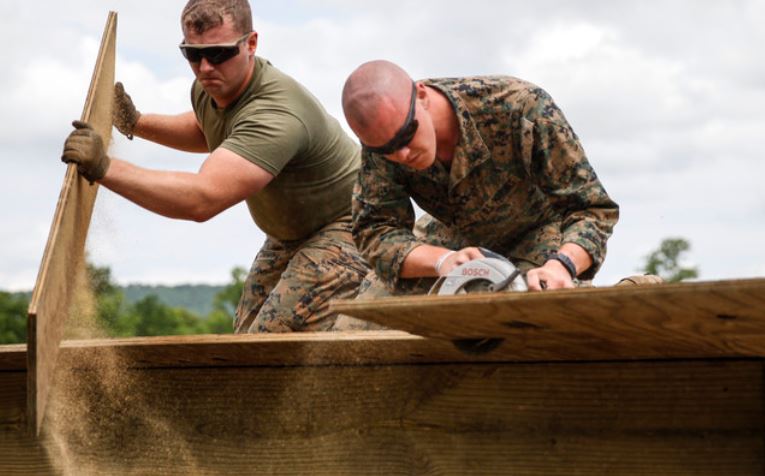
U.S. Marines along with members of the British army Commandos concluded their Red Dagger training exercises last week.
This year’s exercise is the fifth iteration of the bilateral training program, which took place at Fort Indiantown Gap (FTIG), Pennsylvania, May 12-25. The exercise featured soldiers from the Marines 6th Engineer Support Battalion, 4th Marine Logistics Group, Marine Forces Reserve, and British Commandos with 131 Commando Squadron Royal Engineers.
“The fact that we have integrated the Marines and Commando’s has really given us a chance to work closely with the USMC,” 2nd Lt. David Grant, Commando with 131 Commando Squadron RE, British Army, said. “It has been great for me to learn from an active duty Marine, and vice versa. The team dynamic that we have between the Marines and commandos has been influential to share experience and knowledge.”
The goal was to conduct a series of defensive military operations on urbanized terrain, or MOUT scenarios, while partnered with coalition forces.
“The first week started off with some infantry tactics,” 1st Lt. Spencer Lamb, platoon commander with Headquarters and Service Company, 6th ESB, said. “We did the pistol range and tables five and six of the rifle range. Then we moved into the MOUT town with urban warfare infantry tactics.”
The Marines and Commando’s conducted multiple ranges, working together as one force in the various scenarios. Members with Pennsylvania’s Air National Guard played their opposing force.
“We had to figure out what tactics we were operating from in order to be on the same song sheet,” Staff Sgt. Callum Crowe, Commando with 131 Commando Squadron RE, British Army said. “It’s been fantastic building a relationship with the Marines, and I feel that we have integrated well throughout the training.”
Week two of the training was targeted towards combat engineers. They constructed a bunker by digging trenches and moving cement blocks around wooden framed structures, installed flooring and repaired roofing in a warehouse, and put up siding and completed the insulation on an old World War II barracks.
First, the Marines and Commando’s had to attend a mandatory Sapper training class.
“My job was to set up and start the Sapper school,” Crowe said. “The Sapper school was one full day of training on how to properly use the power tools and equipment required for each task site. We wanted to make sure everyone was comfortable using the dangerous items, such as the nail gun, jigsaw and circular saw.”
There were challenges, primarily due to weather conditions, but overall the exercise was a success.
“I think it has been a very beneficial relationship,” Lamb said. “We have learned different terminologies and techniques from the Commando’s. We now have a different perspective on how we view mundane activities, and we really started to see their perspective on accomplishing the task at hand. The Marines and Commandos have really worked well together and learned to communicate and complete tasks on time.”




